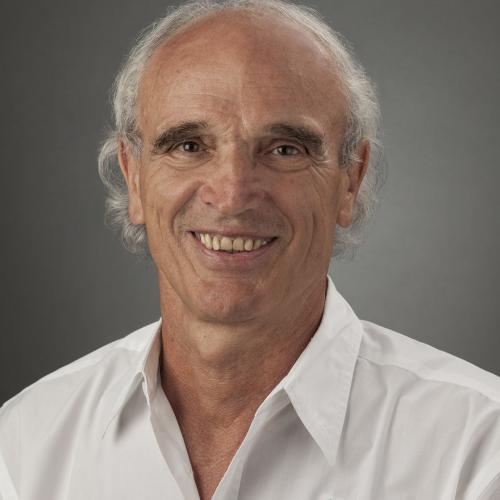by Bruno Chikly, M.D., D.O.
The perpetual search for the body's path to more complete physical healing led to the author's development of a combined, noninvasive technique called Lympho-Fascia Release (LFR). This approach combines the benefits of fluid techniques, using lymphatic-drainage therapy, with those of the solid model, such as myofascial release. The marriage of these two modalities can reduce restrictions with a touch that's elegant, efficient and profound in its application.
As a physician and manual therapist, I'm always looking for the most efficient and least invasive techniques to promote powerful healing with minimal force. During the last 50 years, several widely recognized techniques have emerged inspired by the osteopathic approach employing a solid model method for the physical body, the musculoskeletal framework and the fascia structure. These techniques include fascia and myofascial release, Rolfing and structural integration, and Hellerwork. At the other end of the spectrum, we also have an entire field of gentle fluid techniques that were historically thought to be more difficult to teach in osteopathic schools, including cranial or lymphatic techniques.
As bodyworkers, we know the physical restrictions that result from accidents, surgeries and other traumas can manifest in the body as pain, loss of mobility, reduced range of motion, spasms, fibrotic tissues or inflammation. Some of these restrictions can form adhesions and can be very difficult to release. In traditional manual therapy we're trained to look for these barriers in the body and break through them with a solid model that usually involves some degree of force.
Yet when we address only the fascial fibers in our sessions, without moving the bodily fluid, we often have to push and pull on these fibers to get the results we want. Although this approach can lead to benefits for our clients, it can also result in moderate to significant side effects, including pain, bruising, increased edema, inflammation and eventually the stagnation of lymphatic-extracellular fluid associated with the production of fibrotic tissue. Furthermore, some clients may not be able to receive mechanical techniques, such as traditional myofascial release, if they present acute pathologies, scars, bleeding, recent surgeries or accidents, or other conditions, such as fibromyalgia.
With the development of LFR, we are able to gently and specifically engage the fascia and fluid simultaneously, releasing restrictions on the lymphatic-extracellular fluid and fascial planes in one motion and avoiding most negative side effects.
The technique in action
Normally when we perform lymphatic-drainage therapy, we engage some of the fascia by the very nature of our stroke. By taking the soft touch of lymph drainage just a little deeper, we're able to first engage the fascia then the lymphatic plane, combining the benefits of each in one stroke. With this approach, inspired by the Balanced Ligamentous Tension model proposed by osteopath W.G. Sutherland, the fascial and lymphatic systems work in tandem to maximize the body's response and improve client outcomes.
The concept is quite simple: We bring the fascia to a point of balanced ease and then let the lymph and extracellular fluid move through relaxed fascia fibers. With our stroke, we help the fibers be in the lowest tension possible within the tissue, so we can send significant waves of fluid through the tissue. The effects are immediate. The client may feel a deep wave going through an area, releasing stagnation, inflammation and especially chronic adhesion.
LFR allows the body to create a single, powerful, self-reinforcing wave, which physicists call a soliton, which can travel throughout the entire body. You can think of this in terms of releasing a healing tsunami.
"Our job as the therapist is to find the problem and take the tension away," says bodywork practitioner Molly Clark of Houston, Texas. "We need to put the tissue at zero pressure for it to reach a balance point. When the tissue is neutralized, the wave appears in response to that balance point and the fluid flows naturally, freely.
"We assist the wave, but we don't create it or force it," Clark continues. "We're not technicians doing something to the body, we're simply working with the body's own intrinsic intelligence and self-healing, and self-regulatory mechanisms. That's what makes this technique so profound. It's the pressure and force of this wave created by the body that moves through the restrictions."
With the power of this wave, we no longer have to pull or push on tissues to get the results we're looking for. Simply by using the body's own intrinsic forces, we're able to go deeper into the tissues and reach areas in the body that we can't get to with our hands. In this way, we facilitate not only a local release, but a multitude of releases all along the path of the wave as it travels through the body, affecting other systems it comes into contact with.
Permanent change
Professional violinist Kaaren Fleisher was experiencing postural and mobility difficulties until Clark began using LFR techniques on her. "It is very subtle and gentle," says Fleisher. "It brings relief to the area I complain about, and more importantly changes those areas, so that my body never reverts back to the condition it was in prior to the visit. I always feel like I am a participant in the process; my focus is in letting the areas my therapist is working on relax, release, change. By the end of a session I can feel that my body is changed for the better."
Clark introduced LFR into her massage practice more than four years ago, and finds the technique effective in improving the health of the clients' organs.
"There simply isn't an organ in the body that LFR is not effective on," she says. "When an organ isn't functioning properly, it can adversely affect other organs and body systems.
"For example, most people don't realize that the liver has to elevate in order to raise the right arm," she adds. "This means that restrictions around the liver can result in a limited range of motion in the right shoulder and neck. So it follows that using LFR to release liver restrictions can actually increase a [client]'s range of motion while decreasing neck pain."
Massage therapist and osteopathic medical student Lisa Mazzocut specializes in lymphatic-drainage therapy and regularly uses LFR in her practice. Recently, client Donna Sidel Straus came to Mazzocut's California office after experiencing post-surgical pain and swelling in the neck.
"I was unable, weeks after surgery, to turn my head and had severe swelling on my neck," Sidel Straus recalls. "Immediately after beginning LFR treatment, my swelling was reduced, my mobility increased, my comfort level was greater and my pain lessened."
Mazzocut credits LFR with Straus's success. "The body can become congested due to scar tissue after surgery," Mazzocut explains. "Since lymph vessels don't regenerate well through thick scar tissue, engaging the fascia, in lymph work can provide huge benefits.
"By unwinding the fascia, we're able to open up pathways for the lymph to flow more freely, allowing it to flush though the body unimpeded as it's meant to do," she continues. "This process naturally filters out the fluid in a specific area and can help remove the byproducts of inflammation."
LFR is excellent for treating chronic pain conditions because chronic pain is often an indication of lymph congestion and restriction of the fascia on some level. Because of its effectiveness in reducing scarring and inflammation, this approach also has positive implications for difficult conditions, including long-term fibrosis and fibromyalgia.
In the case of a client with fibromyalgia, LFR is an effective approach because it doesn't create additional inflammation within the body. In fact, LFR is such a gentle approach that it can be effective in treating a number of acute conditions and is also beneficial when working with the elderly, the very young and even our animal companions, all of whom may react negatively to a strong touch.
The key component
The key to this technique lies in client assessment. As therapists, we focus on healing lesions in the body to achieve positive results. If we only address secondary lesions in our treatment, the lymphatic wave, or soliton, won't stay in place. Through proper assessment we can listen to the body and find the specific restrictions it is holding. We can then release these restrictions or lesions naturally without a great deal of force.
Although this technique is relatively simple, it's also very specialized in its application. Naturally, when you approach a client with a lighter touch, you have to be very specific with the assessment and application in order for the treatment to be effective. In Lymphatic Drainage Therapy classes offered through The Upledger Institute, I work closely with therapists to help them develop the skills necessary for proper client assessment. We spend a great deal of time learning specific techniques that allow therapists to work with the body's own consciousness because without the ability to access the body correctly this highly effective technique can be only relatively efficient.
The real benefit of LFR is that as bodyworkers, we don't have to approach the body with the typical, no-pain-no-gain approach to work through barriers. Instead we can retrain our hands to start with the lightest touch possible and increase pressure from there as the body dictates. This allows us to release tension in a manner that's less stressful on our clients - and on us.
Light touch for self-care
LFR and other light-touch techniques can also prolong the amount of time a therapist can practice, because such techniques are easier on the practitioner's hands and body than traditional manual techniques, without compromising the effectiveness of the treatment. In this way, we can develop a new paradigm of healing, a less-pain-more-gain approach for everyone involved.
"LFR can seem counterintuitive at first because it's so much less aggressive than traditional massage," explains Mazzocut. "But it still has the same positive effects on my clients with far less negative impact on their bodies - and on mine.
"I think what's really important for massage therapists to understand is that this type of specialization doesn't limit your practice; it helps it grow and expands the scope of your work while prolonging your ability to help others without hurting yourself in the process," she adds.
Sometimes, releasing restrictions in the body can feel like trying to break down a locked door. But with the right key, the door will open easily, without force. LRF is one of those keys that can lead to a more fulfilling manual-therapy practice, allowing you to improve outcomes for your clients and yourself in a gentle, effective and methodical way.






